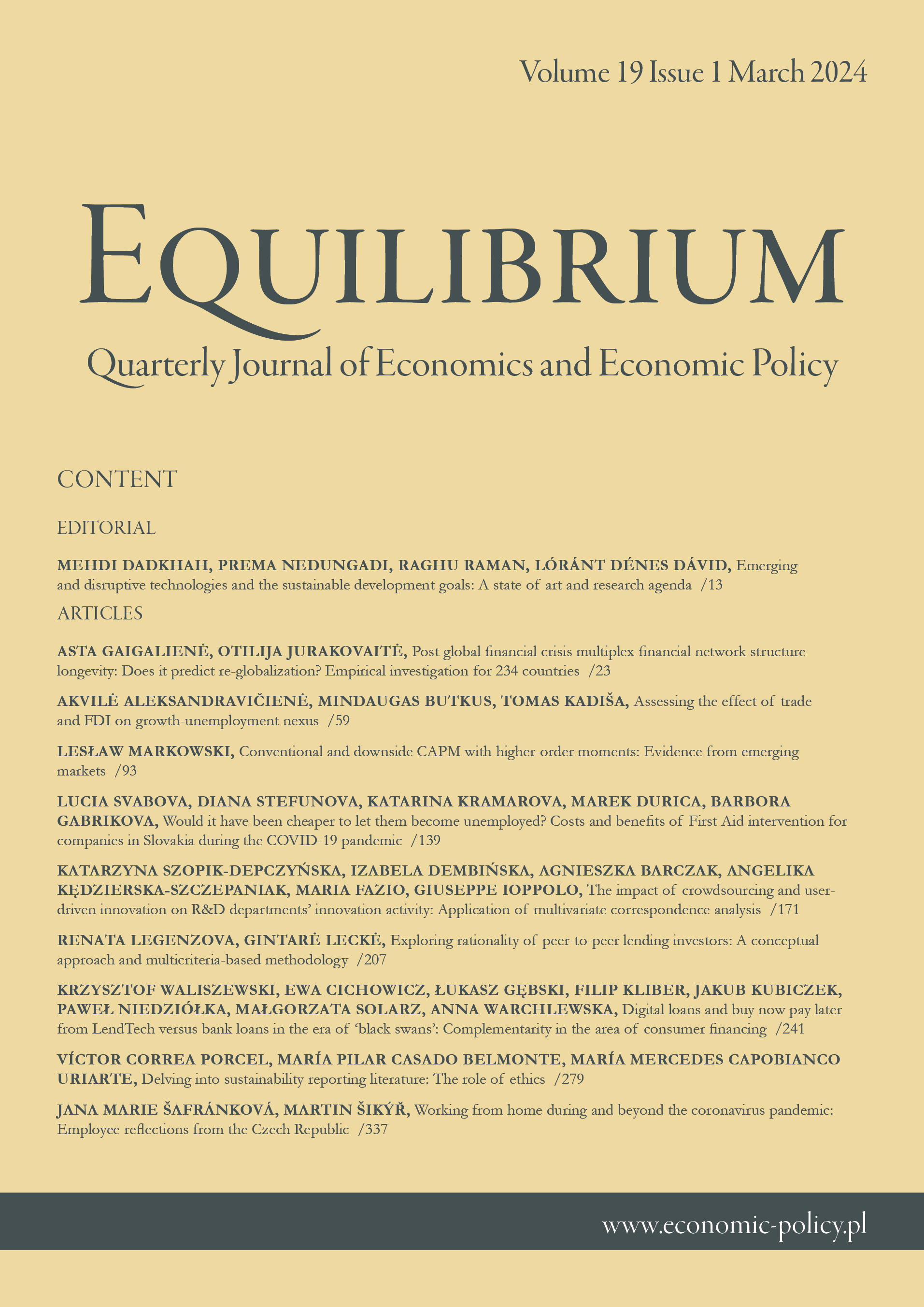Estimating inequality aversion from subjective assessments of the just noticeable differences in welfare
IF 6.2
Q1 ECONOMICS
Equilibrium-Quarterly Journal of Economics and Economic Policy
Pub Date : 2017-03-31
DOI:10.24136/EQ.V12I1.7
引用次数: 2
Abstract
Research background: In Economics, the concept of inequality aversion corresponds with the concept of risk aversion in the literature on making decision under uncertainty. The risk aversion is estimated on the basis of subjective reactions of people to various lottery prospects. In Economics, however, an efficient method of estimating inequality aversion has not been developed yet. Purpose of the article: The main aim of this paper is to develop the method of estimating inequality aversion. Methods: The method is based on two income thresholds which are subjectively assessed by surveyed respondents. Given the level of household income, just noticeable worsening of household welfare is perceived below the first threshold, whereas just noticeable improvement of household welfare is perceived above the second threshold. The thresholds make possible effective calculations of the parameter of the Arrow-Pratt’s constant inequality aversion utility function. In this way, an individual utility of income becomes an empirically observable economic phenomenon. Findings & Value added: In this paper, two theorems are proved which provide the guidance on how to identify a proper version of the above function. The proposed method is tested on the basis of statistical data from the archival survey conducted among Polish households in 1999. The statistical analysis of those data reveals the appearance of convex utility functions as well as concave ones. Nevertheless, the prevailing part of the Polish society exhibited inequality aversion in the year 1999. Another result of this paper is that inequality aversion diminishes as income increases.从对福利显著差异的主观评估中估计对不平等的厌恶
研究背景:在经济学中,不平等厌恶的概念与不确定性决策文献中的风险厌恶概念相对应。风险规避是根据人们对各种彩票前景的主观反应来估计的。然而,在经济学中,还没有开发出一种有效的估计不平等厌恶的方法。文章的目的:本文的主要目的是开发估计不等式厌恶的方法。方法:该方法基于被调查者主观评估的两个收入阈值。考虑到家庭收入水平,在第一个阈值以下,家庭福利明显恶化,而在第二个阈值以上,家庭福利显著改善。阈值使Arrow-Pratt常不等式厌恶效用函数的参数的有效计算成为可能。通过这种方式,收入的个人效用成为一种经验上可观察到的经济现象。发现与增值:本文证明了两个定理,这两个定理为如何识别上述函数的正确版本提供了指导。所提出的方法是根据1999年在波兰家庭中进行的档案调查的统计数据进行测试的。对这些数据的统计分析揭示了凸效用函数和凹效用函数的出现。然而,波兰社会的主流阶层在1999年表现出对不平等的厌恶。本文的另一个结果是,对不平等的厌恶随着收入的增加而减少。
本文章由计算机程序翻译,如有差异,请以英文原文为准。
求助全文
约1分钟内获得全文
求助全文
来源期刊
CiteScore
9.20
自引率
3.50%
发文量
28
审稿时长
36 weeks
期刊介绍:
Equilibrium. Quarterly Journal of Economics and Economic Policy is a scientific journal dedicated to economics, which is the result of close cooperation between the Instytut Badań Gospodarczych/Institute of Economic Research (Poland) and Polish Economic Society and leading European universities. The journal constitutes a platform for exchange of views of the scientific community, as well as reflects the current status and trends of world science and economy.
The journal especially welcome empirical articles making use of quantitative methods in: Macroeconomics and Monetary Economics, International Economics, Financial Economics and Banking, Public Economics, Business Economics, Labor and Demographic Economics, Economic Development, and Technological Change, and Growth.
Current most preferable topics and special issues:
The economics of artificial intelligence: business potentials and risks;
Digitalization and entrepreneurship in economics;
Sustainable socio-economic development, environmental and ecological economics;
Transition in the energy market (improving energy efficiency, alternative energy sources, renewable energy, energy security).

 求助内容:
求助内容: 应助结果提醒方式:
应助结果提醒方式:


